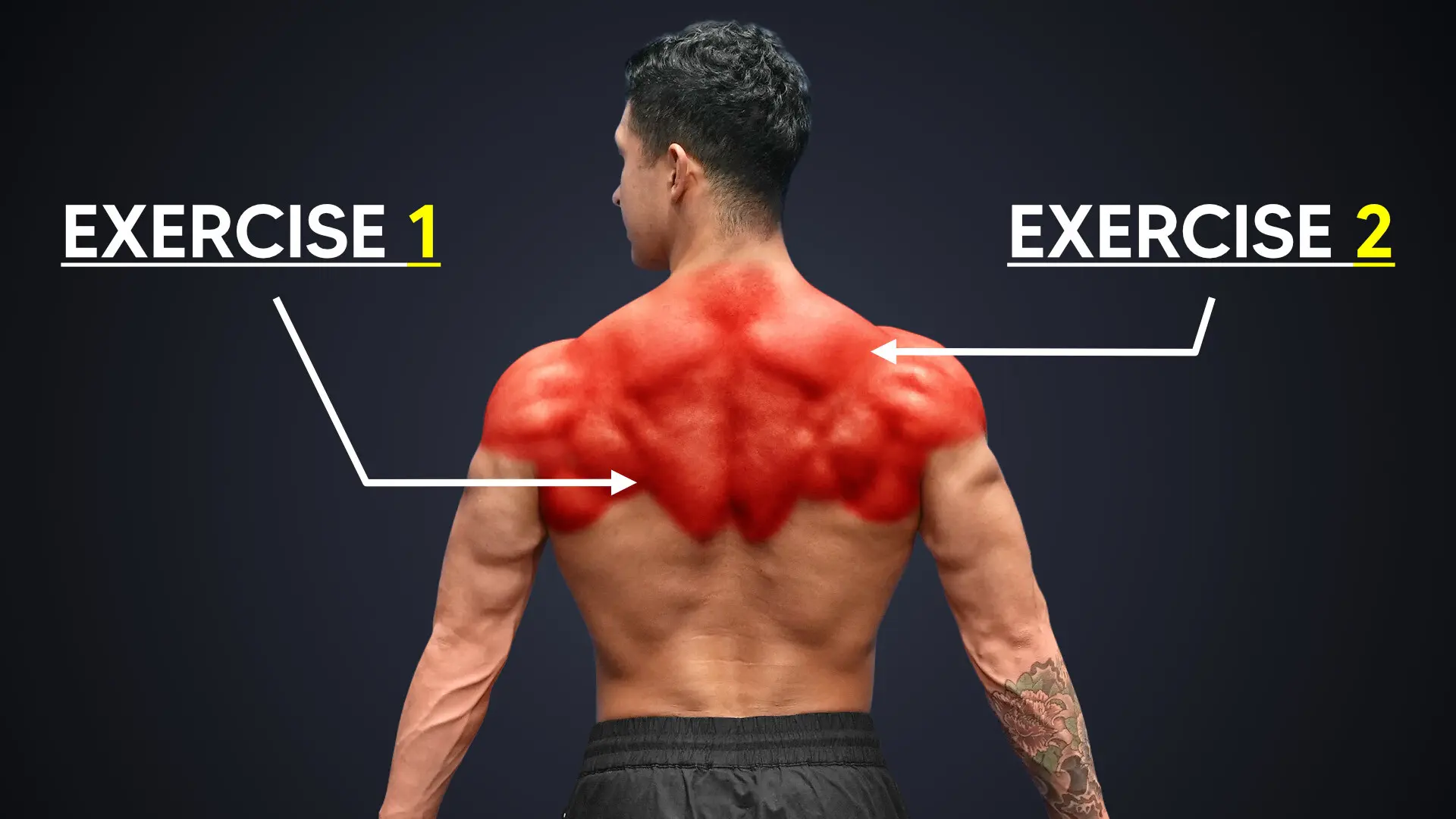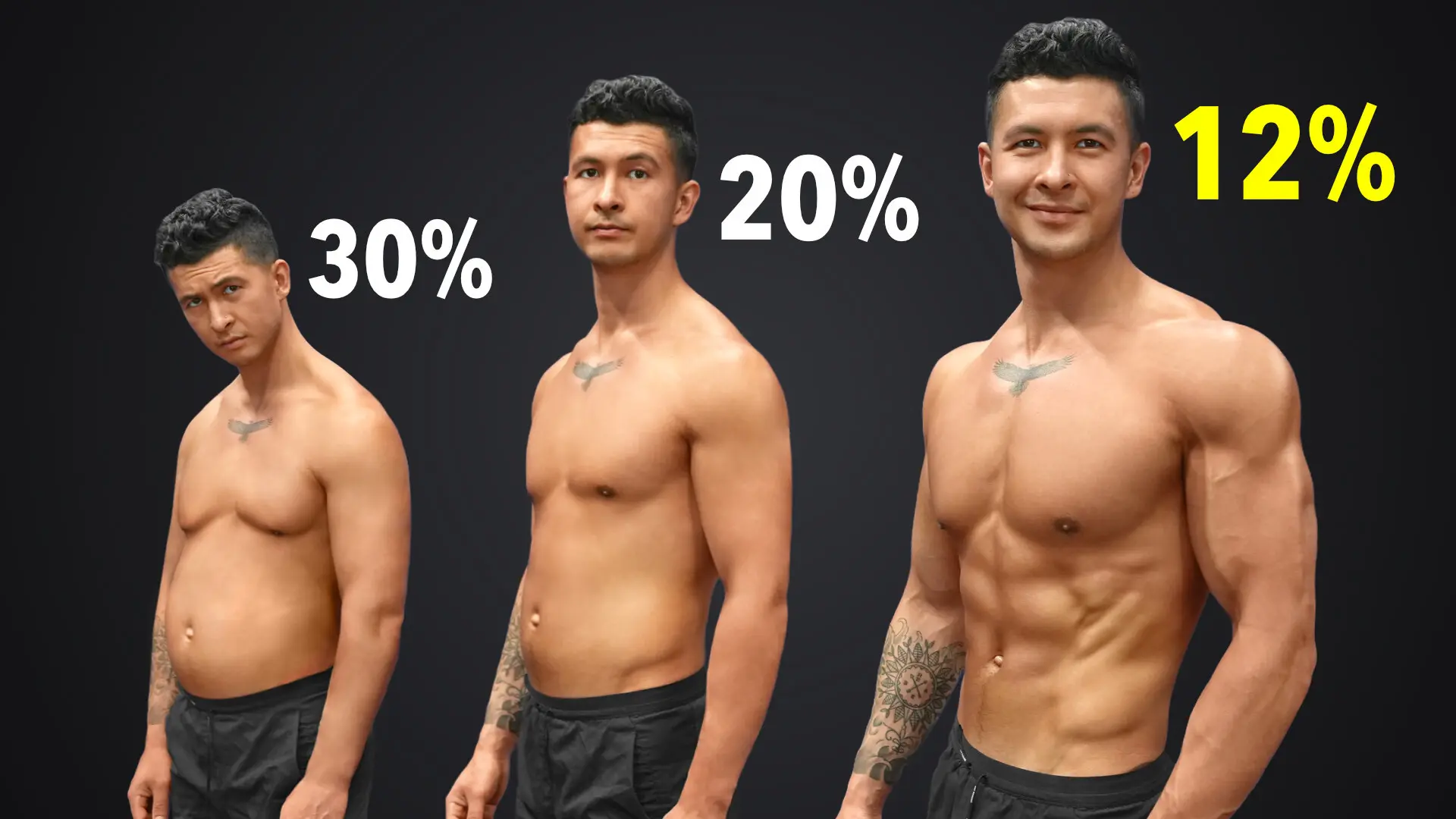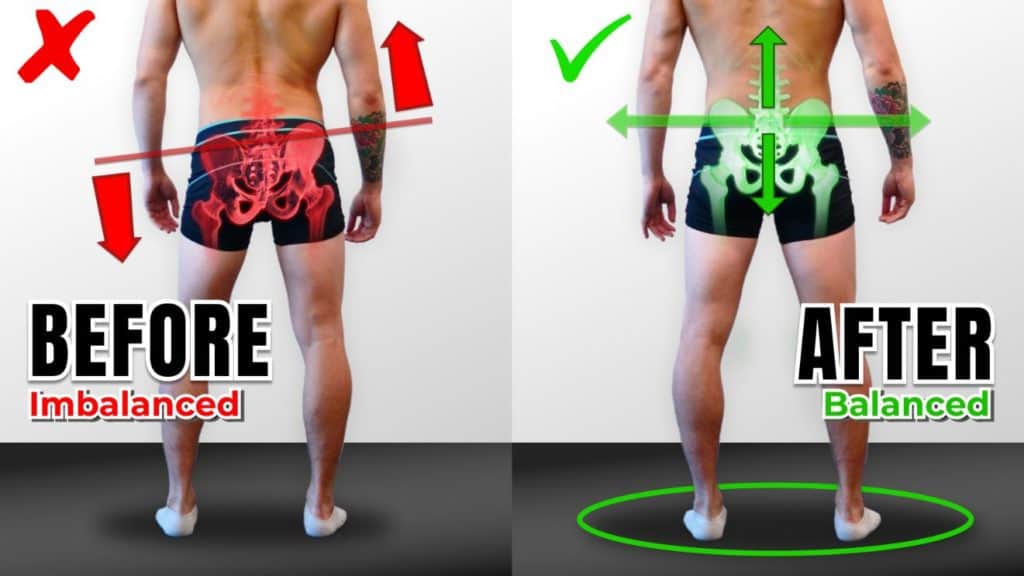
Fix Your Uneven Hips (10 Minute Corrective Routine)
Are your hips tight? Do they ache or just feel “off”? When you squat, do you shift more to the left or right? Or...when standing, have you noticed that your right hip is higher than the left (or vice versa)?
If you said yes to any of those things, then you may have a 'Hip Asymmetry". In other words: you have uneven hips. Sometimes “Hip Asymmetry” happens because of the way you're built. For instance, if one of your legs is longer than the other. But in most cases, you'd have developed uneven hips from muscular imbalances due to lifting or doing any kind of repetitive task - like simply sitting a certain way. Is this problematic? Well, admittedly, various asymmetries in the body are expected. And perfectly normal. But issues arise when these asymmetries (e.g. your uneven hips) start to cause pain, discomfort or affect your lifts.
So, today, I'm going to show you 3 tests you can perform to see if you currently have asymmetries in your hips. Don't worry if you test positive in any of these 3 tests, either. I'll also give you a home exercise program that focuses on:
- Strengthening weak structures AND
- Mobilizing tight structures
... To restore balance in your hips.
Want to avoid these imbalances right from the start – which are only going to set your progress back in the gym? Of course, you do. And you’re going to do just that with the programs I’ve created. Every one of them has been designed specifically to help develop your physique in an all-rounded way so you achieve your fitness goals safely – and in the most time-efficient way possible. If you’re interested, then:
Click the button below to take my analysis quiz to discover the best program for you:
↓
How To Test If You Have Uneven Hips
Test 1: Static Hip Balance
The first test for uneven hip is something called static hip balance. Here's what you're going to do:
- Stand in front of a mirror.
- Palpate the top of your hip bones and orient your hands flat to the floor.
- Compare the level of your hands.
If one hand sits higher than the other, then you may be positive for an unevenness in hip height.
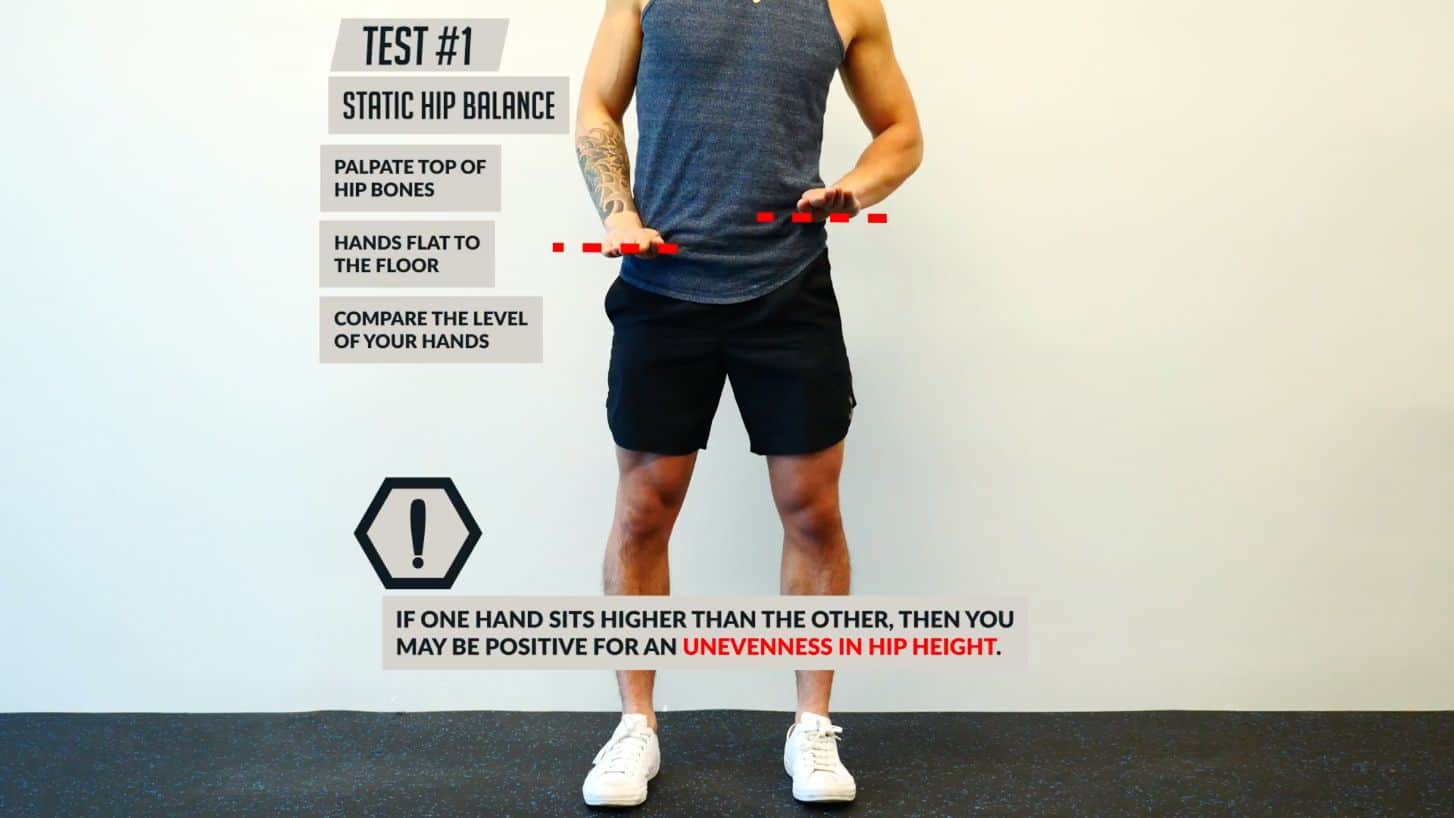
Again, this isn’t necessarily problematic. In many cases, this is normal. But for some individuals, this is nevertheless a good thing to address - simply for the reasons discussed earlier. However, this test is a static test. Your deficits may only occur when you’re moving. This is where test 2 comes in.
Test 2: Dynamic Hip Balance
Test 2 for uneven hips will help screen for a phenomenon called the Trendelenburg sign. For this test:
- Again, stand in front of the mirror. Or better yet, take a video from behind you.
- Raise one leg so that your foot is off the ground.
- Hold this position for 30 seconds.
- Repeat this test on the other side.
If you struggle to balance when doing this test, you can lightly hold onto a wall for support. Normally, the pelvis of the raised leg should rise a little as shown here. Which would indicate a negative test.
If, however, the:
- Pelvis of the raised leg drops AND
- Trunk muscles flex towards your planted leg
... Then that would indicate a positive for the Trendelenburg sign.
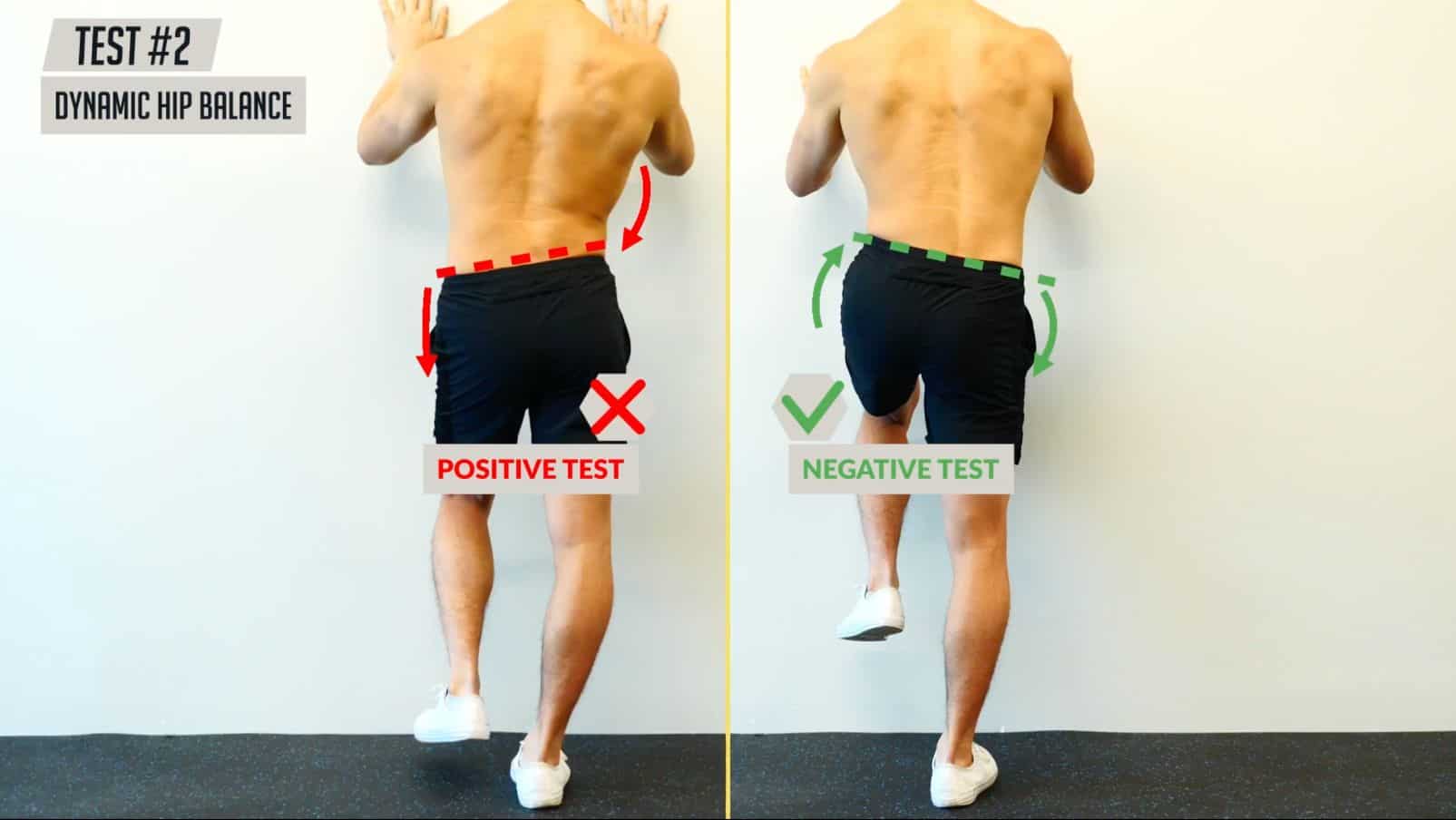
As for why this happens? Well, that's because whenever you get into a single-legged stance, the hip muscles (e.g. the glute medius of the grounded leg) have to work to stabilize your upper body over your pelvis. If these muscles are weak, then they’re unable to stabilize the pelvis. In this case, the trunk muscles like the abdominals will take over their job by contracting and flexing your upper body to the side of the raised leg. This is why we see that hip drop towards the lifted leg in a positive test.
So if you tested positive when raising your right leg, then that’s an indication of weakness in the glute medius of your left leg. And vice versa. Strengthening this muscle can help restore balance.
Test 3: Hip Shift
Test 3 for uneven hips is going to take this one step further. It'll help assess your hip symmetry when lifting. Next time you squat, look in the mirror and pay attention to your hips as they come up from the bottom. Better yet, film yourself from the front and back during your next hard working set of squats. Ideally, your hips should rise symmetrically and in parallel.
However, what some of you might notice is that you preferentially favor squatting through one side more than the other. Which, in turn, causes a subtle shift to the left or right as your squat. Sometimes, this is caused by a strength imbalance where you preferentially shift towards your stronger hips.
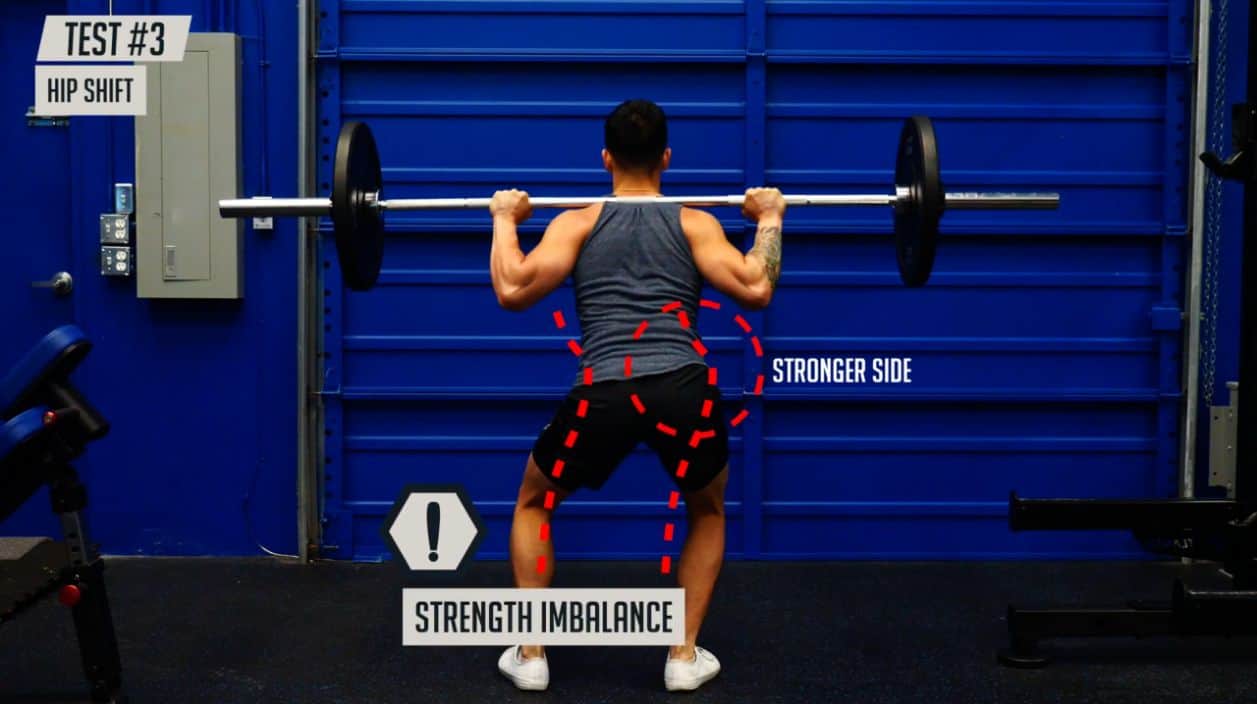
If this were the case for you, you'd have found out about it through the previous 2 tests. In other cases, however, this issue can be caused by a side-to-side hip mobility imbalance - specifically with external rotation. Regardless. I'll address both issues (strength and mobility) in the following uneven hips fix routine.
How To Fix Uneven Hips
Speaking of fixes, now we’re going to dive into a simple yet effective 2 step plan (mobilize → strengthen) that anybody who tested positive for any of those previous tests can start incorporating right away to help improve any potential imbalances.
Step 1: Mobilize Your Hips
Step 1 is all about mobility.
Start With The 90/90 Drill
The first of the exercises for uneven hips focuses on the hips with what’s known as the 90/90 drill. To perform it:
- Sit on the ground with one leg bent in front of the other like so.
- Then, while keeping your torso stacked over your hips, transition from one side to the other by opening up your hips.
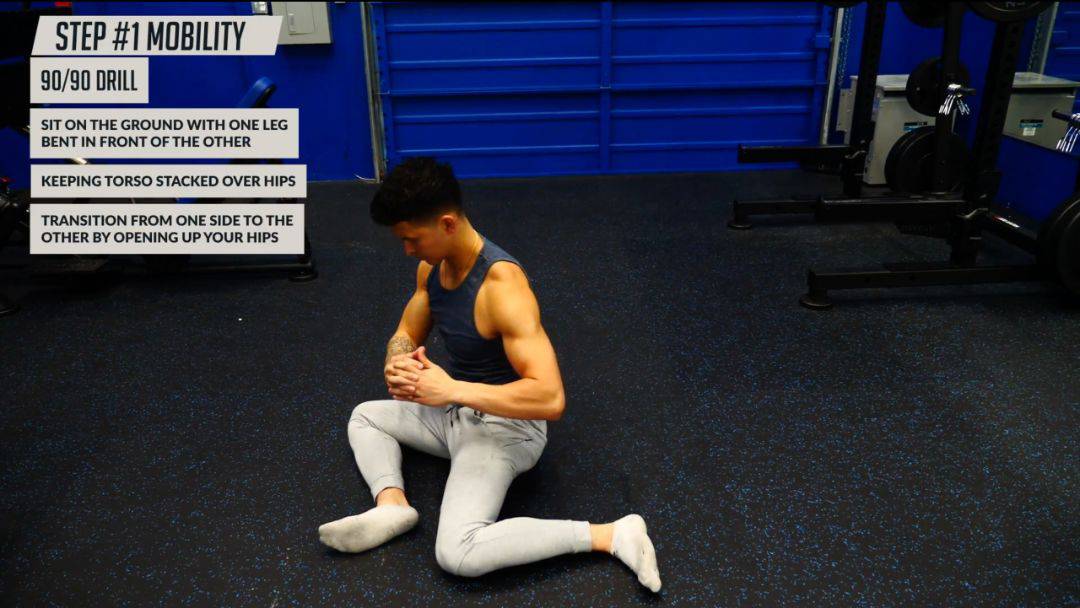
Some of you may find that your front leg on one side has a more difficult time keeping its knee on the floor. Note that this is a good indication that it's limited in that specific hip's ability to externally rotate. So, you can spend more time on that tighter side. And if needed, you can support your body up with your arms. As your mobility improves, you can progress this move by bending your upper body over your front leg to get an even deeper stretch. Do this for 3 sets of 10 reps each side.
Move On To 'The Teapot' Exercise
The second exercise is called “The Teapot”. This exercise is used to mobilize 2 muscles that can lead to a hip being elevated or depressed. For example, a tight:
- Quadratus lumborum (QL) - Can pull up the iliac crest and cause it to be elevated WHEREAS
- Tensor fascia lata (TFL) - Can pull down on the iliac crest and cause it to depress
To perform this exercise:
- Stand with your back against a wall for support.
- Cross your target leg behind the other one.
- Put one hand on your pelvis, then reach the other hand overhead.
- Bend away from the target side. You should feel a gentle stretch in your lower back and hips opposite to the side you're reaching towards.
- Hold the end position for 1-2 seconds and return to neutral.
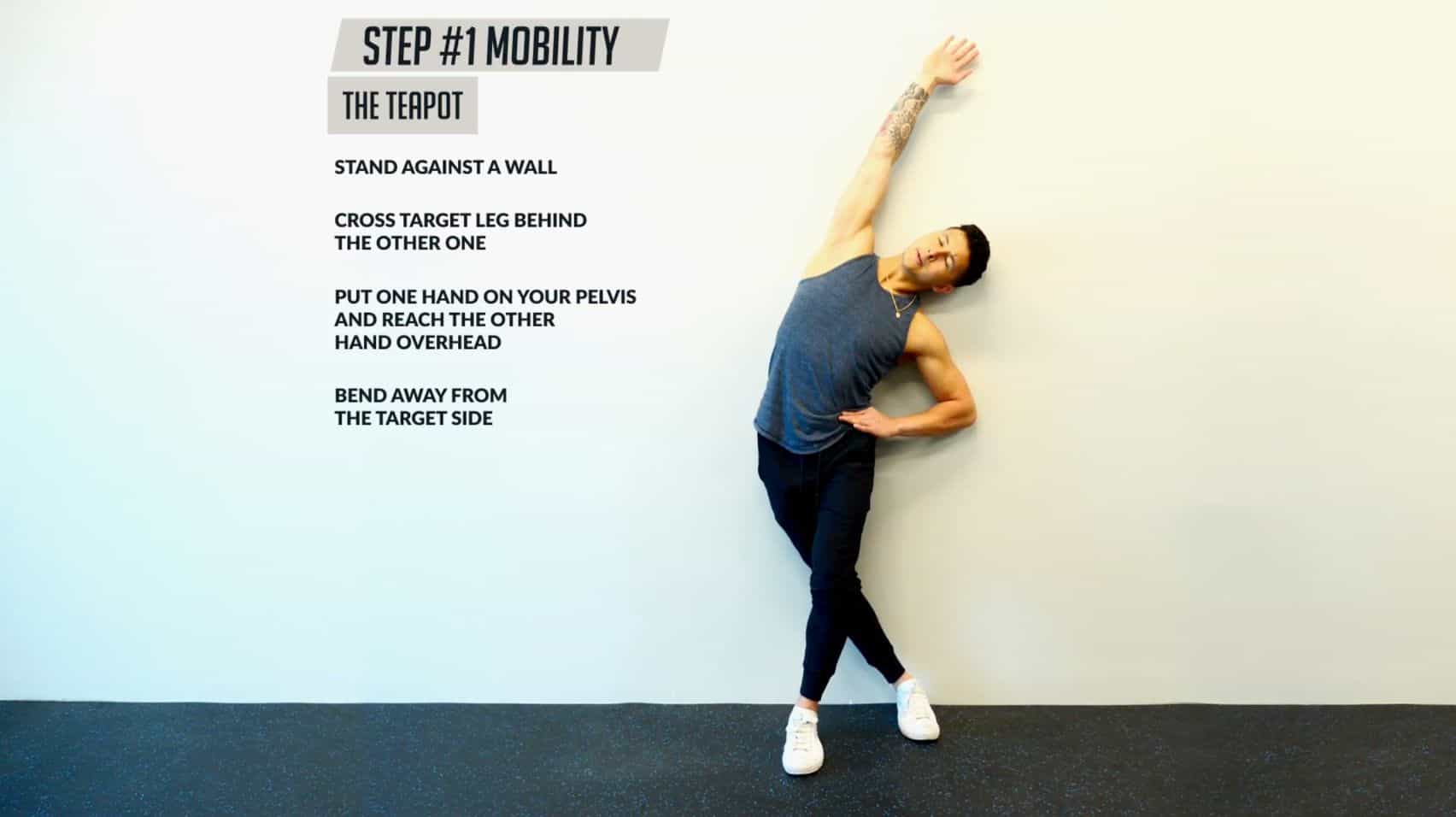
Do this exercise for 3 sets of 10 reps each side.
Step 2: Strengthen Your Hips (Glute Medius)
Step 2 to fixing your uneven hips (i.e. the strengthening portion) is arguably the most important step. Mobilizing is a great way to help with short-term pain and/or mobility improvements. But you'll find that gains from strengthening last much longer. Thus, explaining why a combination of both is great to get both short-term and long-lasting gains.
To do so, we'll use a progression going from 2 easier exercises in level 1 to 2 more difficult ones in level 2 for you to move onto once ready.
Level 1 Of Strengthening Your Hips
Exercise 1: Hip Drop
The first exercise in level 1 is the hip drop. This will work your glute medius isometrically as they stabilize the hips. To perform this exercise:
- Find a small step or hop on a stable stack of books.
- Place one leg firmly on the step while the other leg hovers over the edge.
- Place your hands on your hips.
- Then, begin to slowly lower your foot to the ground by letting the hip of that side drop towards the floor.
- Your planted leg should be kept straight. At the bottom position, the hand of your dropped leg should be lower than the hand of your planted leg.
- Hold this for 1-2 seconds.
- Then, raise back up to neutral in a controlled manner, thinking about using the outer hip muscles on the side of the planted leg.
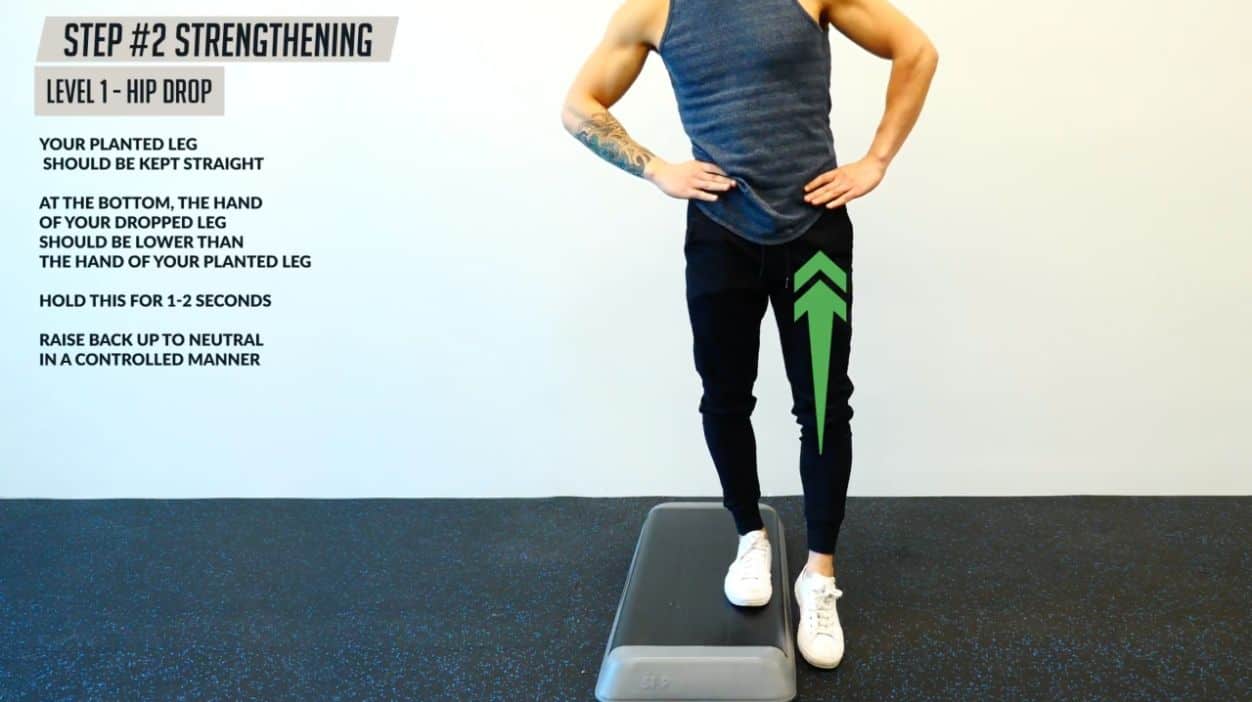
Note that when you drop the hip, you're strengthening the opposite glute medius - which is isometrically contracting. Repeat this exercise on both sides for about 3 sets of 8-10 reps.
Exercise 2: Side-Lying Hip Abduction
The next exercise of this level is the side-lying hip abduction. Or what I like to call the “Jane Fonda”. For this exercise:
- Lay down on your side with your hips stacked on top of each other, with the bottom leg bent.
- Think about driving that bottom knee into the ground for stability.
- Then, keeping your top leg straight, raise it not just up but slightly backward. This is key to engaging the glute medius - rather than other muscles.
- If you're doing this correctly, you should feel this in the outer butt of the top leg.
- Hold the top for 1 second and slowly lower.
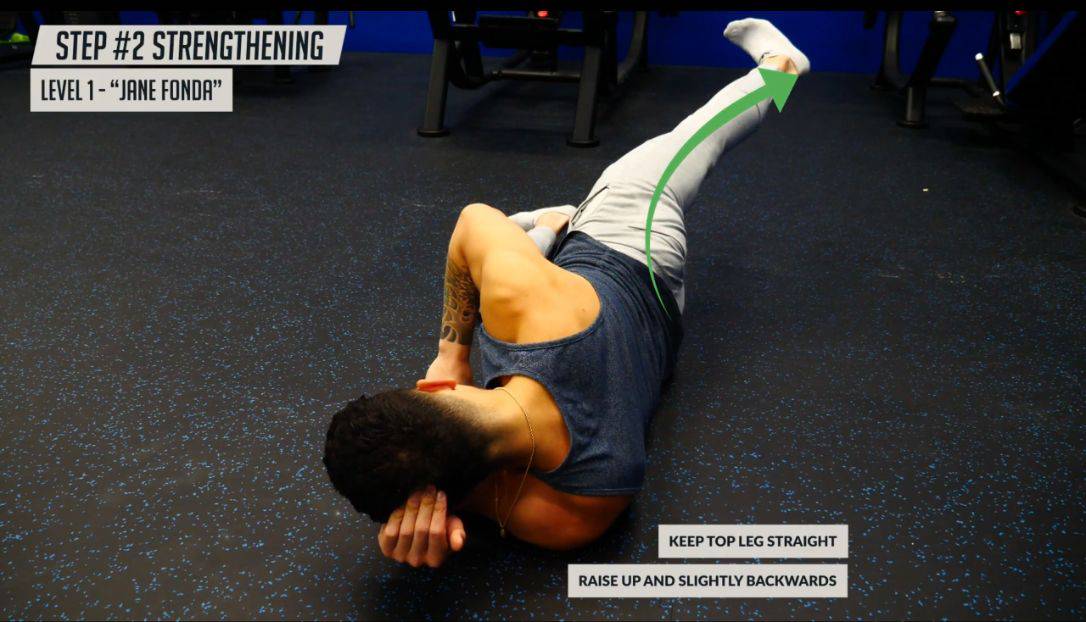
Repeat on both sides for 3 sets of 8-10 reps. And for these exercises, it's also a good idea to train your weaker side just to prioritize it a little bit more.
Level 2 Of Strengthening Your Hips
Once you’ve mastered level 1 and your strength improves, you can move onto level 2.
But wait. What if you find yourself struggling with level 1 even after many weeks - and can't seem to make progress with your uneven hips? Don't worry. The team here at BWS (along with myself) have successfully coached many like yourself - and are confident that we'll be able to help you balance out the asymmetry. If you'd like perfectly-balanced hips (and achieve your dream physique in the most time-efficient way possible):
Click the button below to find out more about the 2-on-1 coaching program:
↓
Exercise 1: Hip Airplane
The first exercise we’ll use here is something called hip airplanes. This is an excellent move that was first brought to my attention by renowned researcher Dr. Stuart McGill. The great thing about this exercise is that it performs 2 functions; it helps:
- Improve the hip strength of your planted leg AND
- Your hip mobility
... At the same time.
To perform these, I'd recommend starting out with assistance by holding onto a table or any fixture for balance. Then:
- Keep one leg planted on the ground, grip the floor with your planted foot, and rotate your torso forward while kicking your back leg behind you.
- Keep your back leg completely straight - and the knee of your planted leg in a slightly bent position.
- Next, slowly rotate your hips in toward your planted leg. And then away form it by opening up your hips.
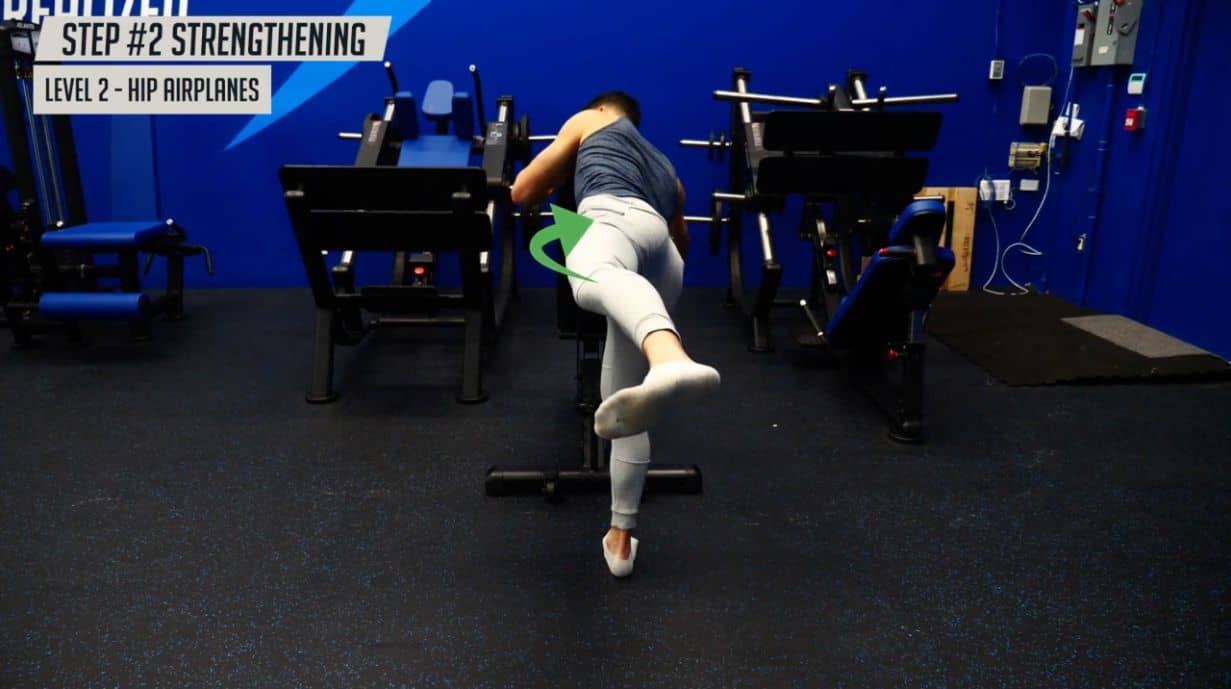
Tips On Performing The Hip Airplane
A cue that may help you with performing this exercise is to think about simply moving your belly button towards your planted leg. And then away to the side. You want the movement to come from your hips as opposed to simply twisting your upper body. When done properly, you should feel a stretch in your upper groin. And you should also feel the glute medius of your planted leg kicking in to stabilize you.
Aim for about 3 sets of just 3-5 slow and controlled reps on each side. Many of you will find that one side is harder to stabilize or more restricted than the other. In which case, you’ll want to spend more time working on that side.
Once you’re capable, you can progress this move by using less assistance. For example, just one arm instead of two. Eventually, you can progress to no assistance by keeping your hands on your hip bones or out to your sides.
Exercise 2: RNT Squat
The second exercise of this level, the RNT squat, helps tie everything together functionally. And is especially helpful if you tested positive for hip shift when squatting.
To perform these, wrap a light resistance band around a fixture and loop it around one knee such that it's pulling you towards your hip shift. For example, if your hips shift to the left when squatting, you'd wrap it on your right knee - such that it pulls in towards the left. And vice versa if your hip shift was to the right.
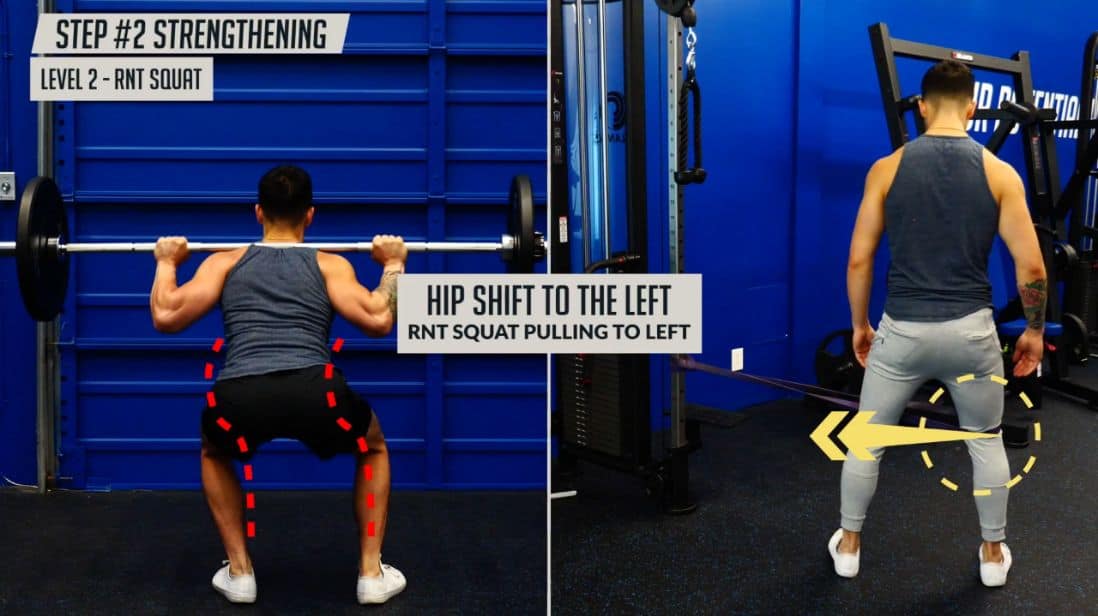
After you set this up, squat down and pause for 2 seconds in the bottom position. Make sure you avoid letting your banded knee collapse inwards. By pulling your body into the hip shift, your body will learn to reflexively pull out of that dysfunction by activating the weaker glute. And, in turn, getting you back to where you want it to go. Aim for about 3 sets of 6-8 reps.
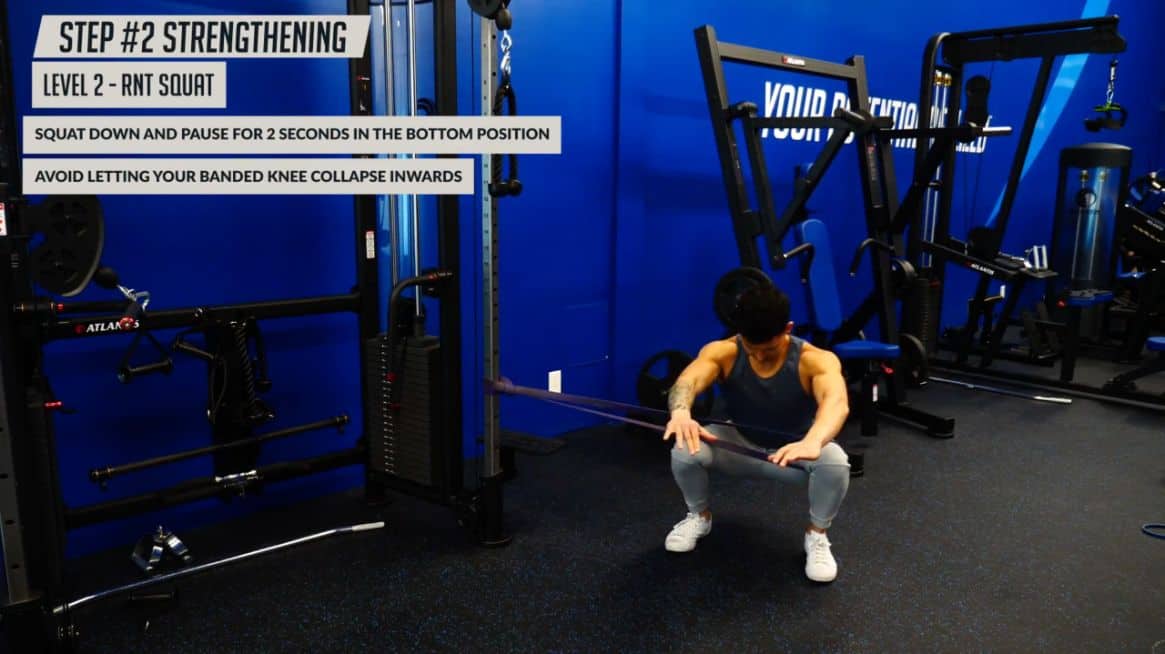
10 Minute Uneven Hips Corrective Routine
Now let’s put this all together for you into a simple yet effective 10-minute corrective routine. Start out with the mobility exercises and level 1 strengthening exercises. Once you feel that level 1 becomes too easy, then progress to level 2. You want to perform the 4 exercises for whatever level you’re on in order and as a routine at least 2-3 times a week. This can be done at any time of the day or as part of your warm-up routine before a lower-body workout.
Here's what your uneven hips corrective routine should look like:
Hip Mobility
90/90 drill - 3 sets of 10 reps
QL stretch - 3 sets of 10
Hip Strengthening Progression Level 1
- Hip Drop - 3 sets of 8-10 reps
- Jane Fonda - 3 sets of 8-10 reps
Hip Strengthening Progression Level 2
- Hip Airplanes (Assisted -> Less Assisted) - 3 sets of 3-5 reps
- RNT Squat - 3 sets of 6-8 reps (on affected side)
After you’ve used this routine for a little while, it’s important to re-test your hip balance using whichever test you failed on to see if there have been any improvements. Then, once your asymmetries have been significantly improved, you won’t need to do these exercises as often. But should still incorporate some of them into your weekly routine while just making an effort to get off your butt and move more in general!
Fix Uneven Hips: Takeaway
But overall, it's important for you to pay attention to often-neglected muscles - like the ones I went through in this article - to prevent potential imbalances and injuries from creeping up on you later on down the road.
And for a step-by-step all in one program that shows you week by week exactly how to train to build muscle and strength without leaving any important muscles behind, then:
Click the button below to take my analysis quiz to discover the best program for you:
↓



